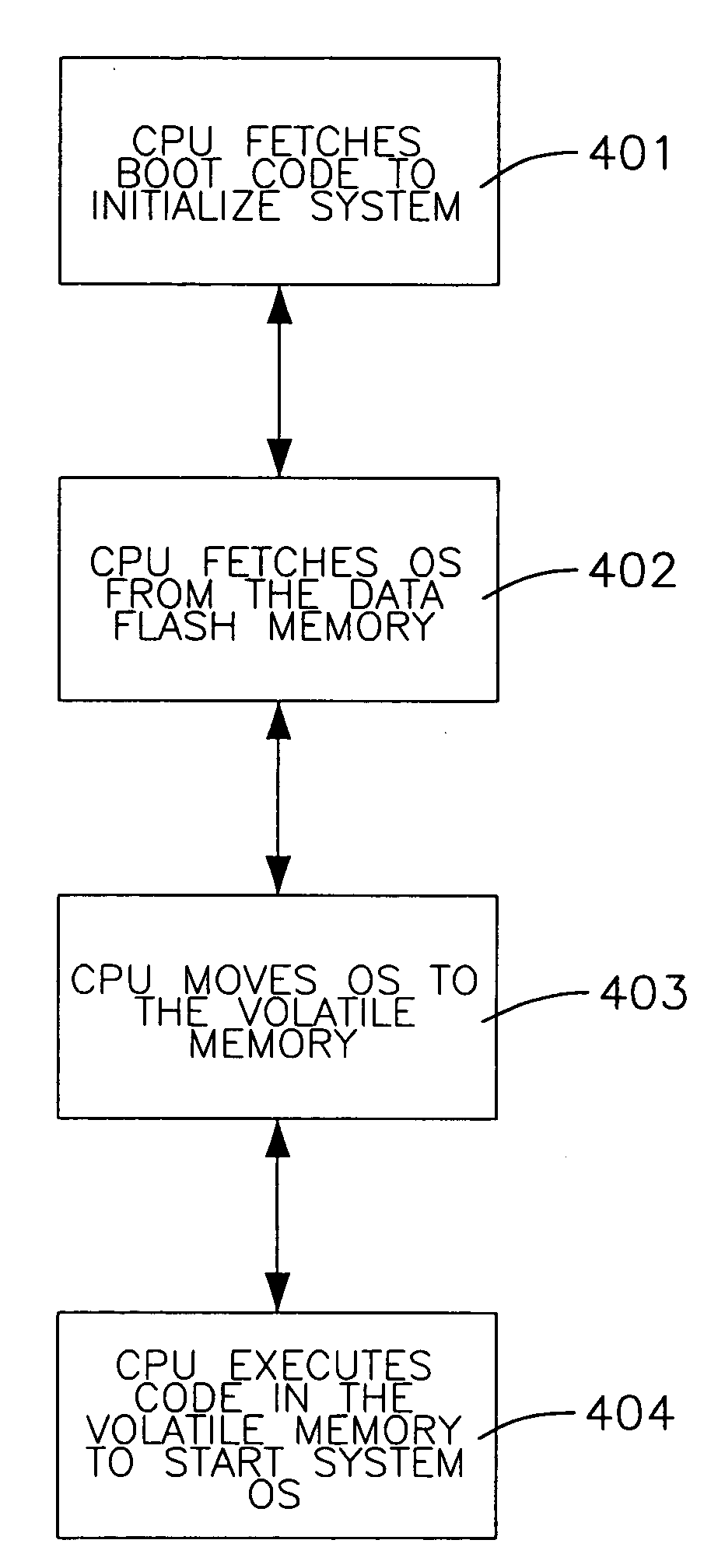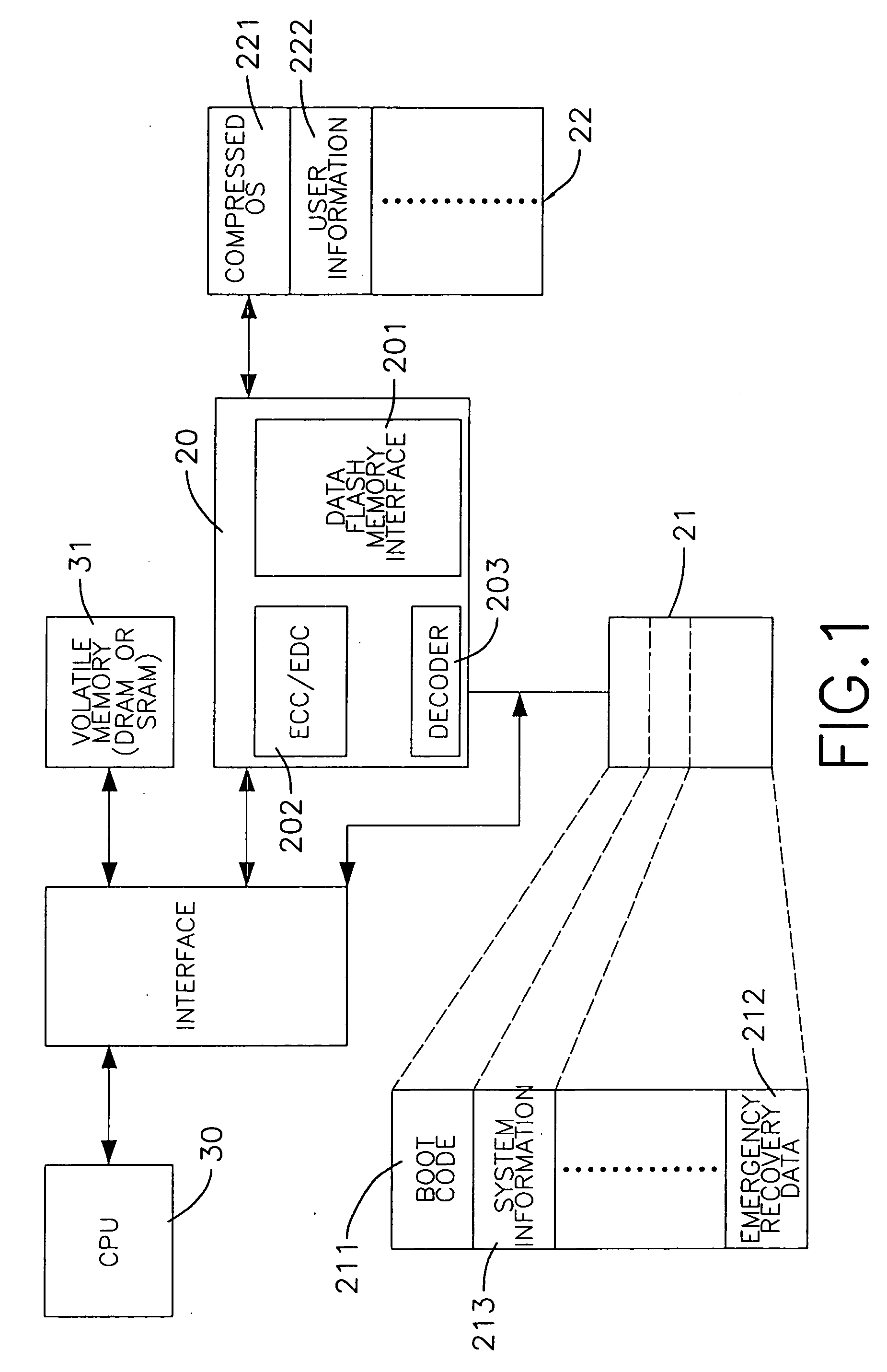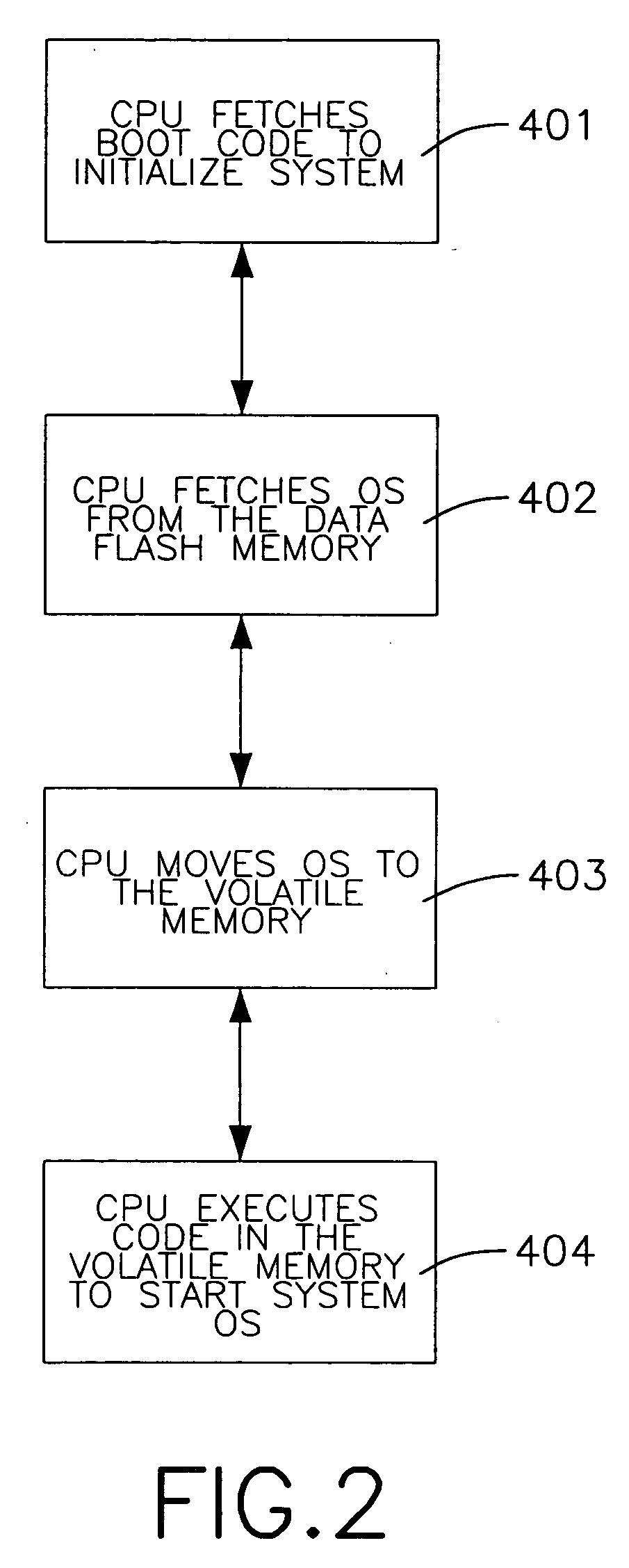Memory system for an electronic device and the method for controlling the same
a technology of electronic devices and memory systems, applied in the field of memory systems, can solve the problems of poor programming and erasing speed, less flexibility of the system designer, and increased cost difference between the two kinds of memories, and achieve the effect of fast system startup time and low bit error ra
- Summary
- Abstract
- Description
- Claims
- Application Information
AI Technical Summary
Benefits of technology
Problems solved by technology
Method used
Image
Examples
Embodiment Construction
[0024] As discussed in the prior art, data flash memory and code flash memory both possess their respective advantages and limitations; however, data flash memory is still superior to code flash memory in the aspects of extended capacity and data reading / writing reliability. Although the system is unable to directly retrieve the boot code from the data flash memory, using code flash memory of a small capacity can solve the problem. The present invention thus integrates the foregoing two types of memories as a unique memory system and is applied for use in electronic products.
[0025] With reference to FIG. 1, the memory system according to the present invention is applied in an electronic device (for example, a cell phone or PDA), and comprises a control unit (20), linear-addressing nonvolatile memory (21), and data flash memory (22).
[0026] The control unit (20) couples to a CPU (30) of the electronic device through an interface (not numbered), wherein volatile memory (31) such as a...
PUM
 Login to View More
Login to View More Abstract
Description
Claims
Application Information
 Login to View More
Login to View More - R&D
- Intellectual Property
- Life Sciences
- Materials
- Tech Scout
- Unparalleled Data Quality
- Higher Quality Content
- 60% Fewer Hallucinations
Browse by: Latest US Patents, China's latest patents, Technical Efficacy Thesaurus, Application Domain, Technology Topic, Popular Technical Reports.
© 2025 PatSnap. All rights reserved.Legal|Privacy policy|Modern Slavery Act Transparency Statement|Sitemap|About US| Contact US: help@patsnap.com



